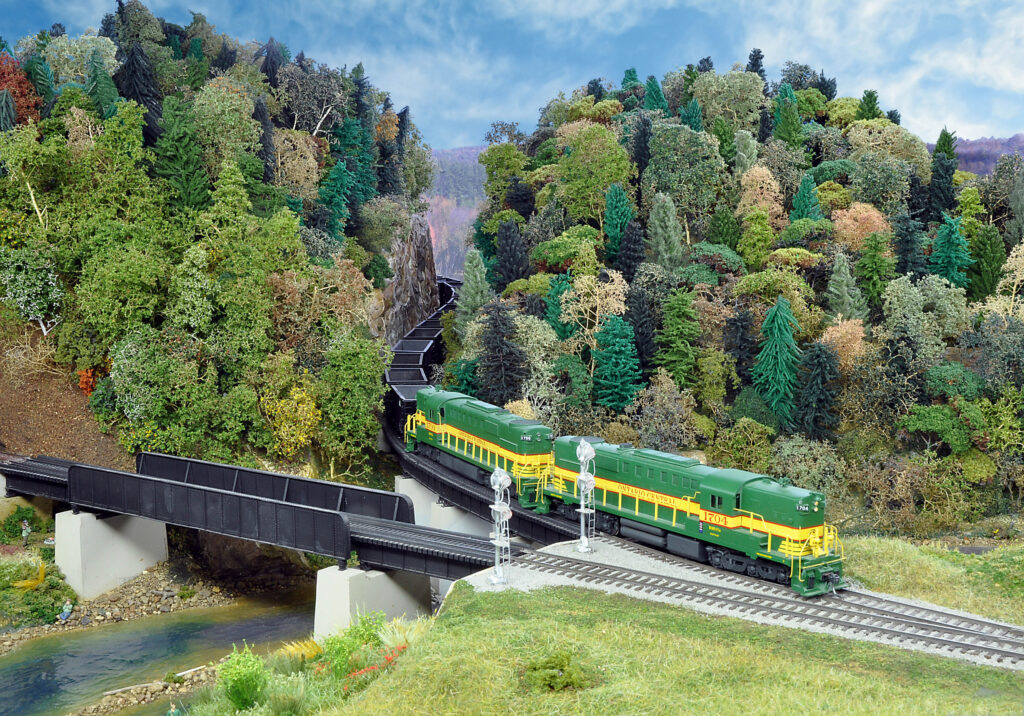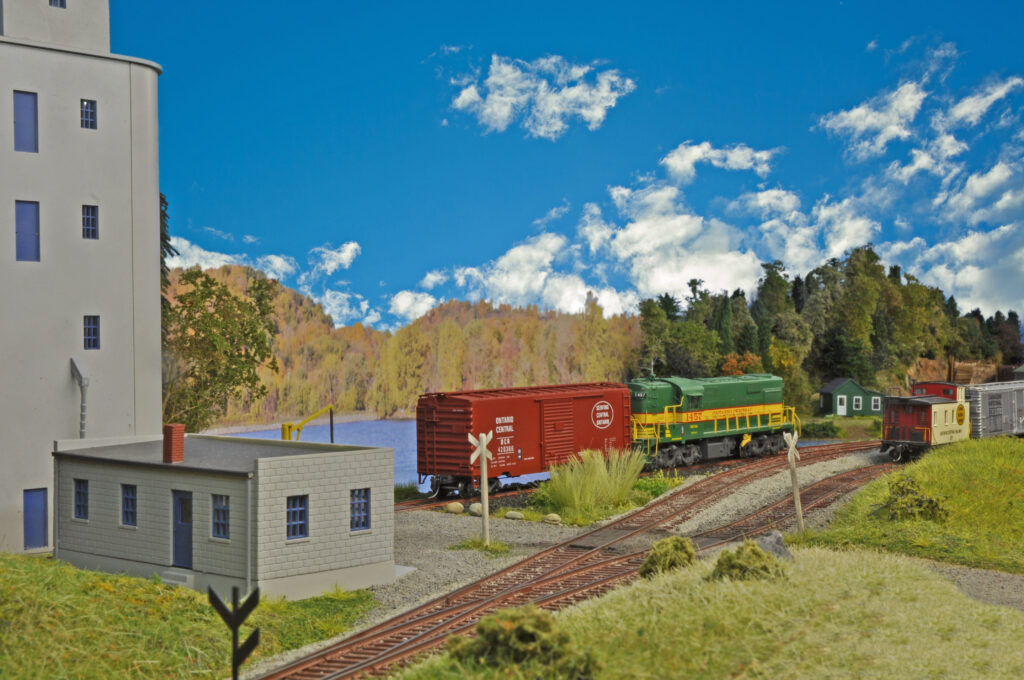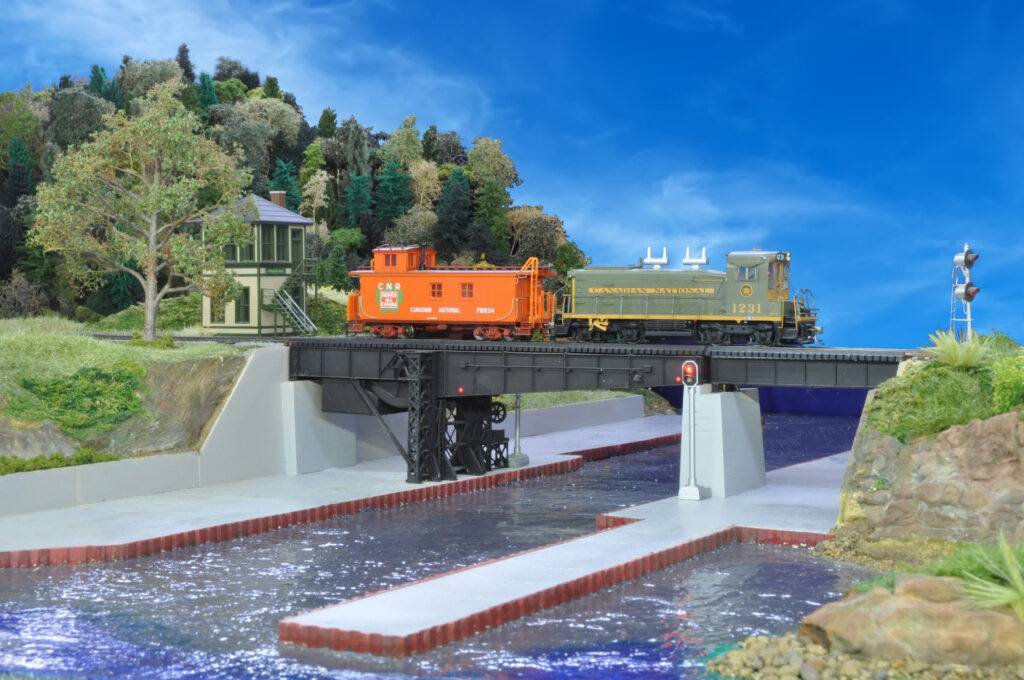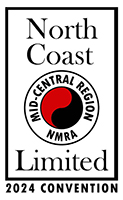ONTARIO CENTRAL RAILWAY
Bram Bailey
HO Scale
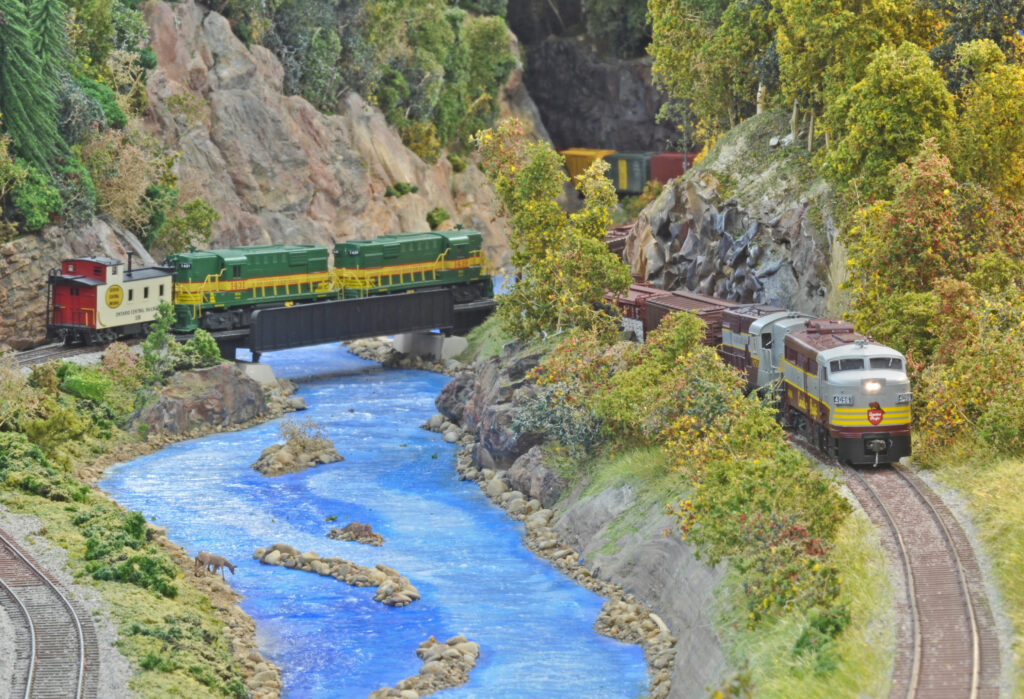
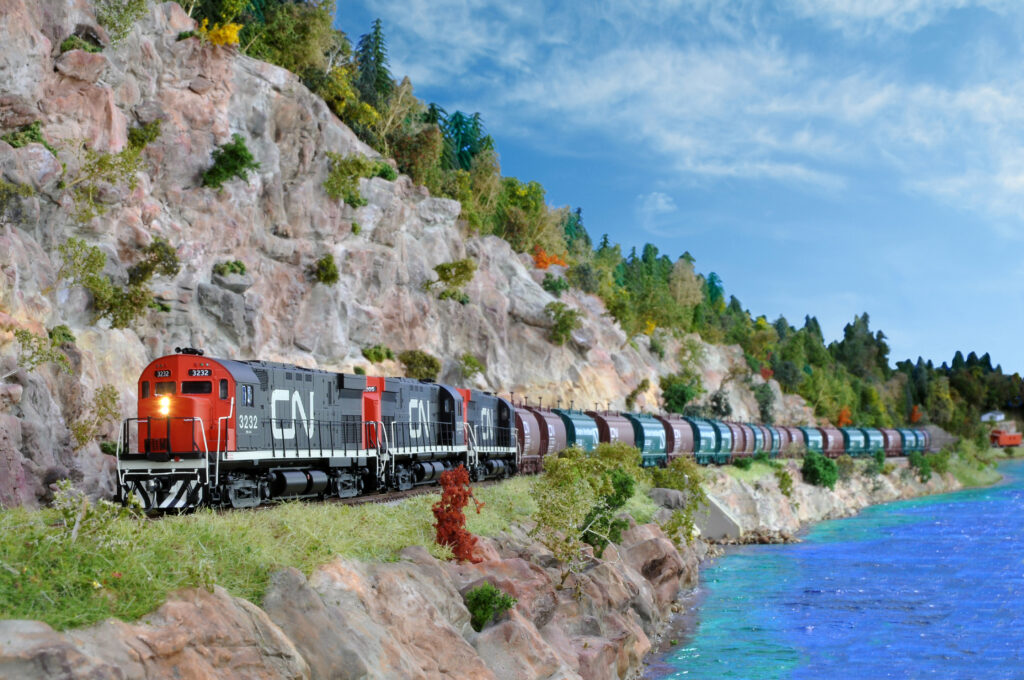
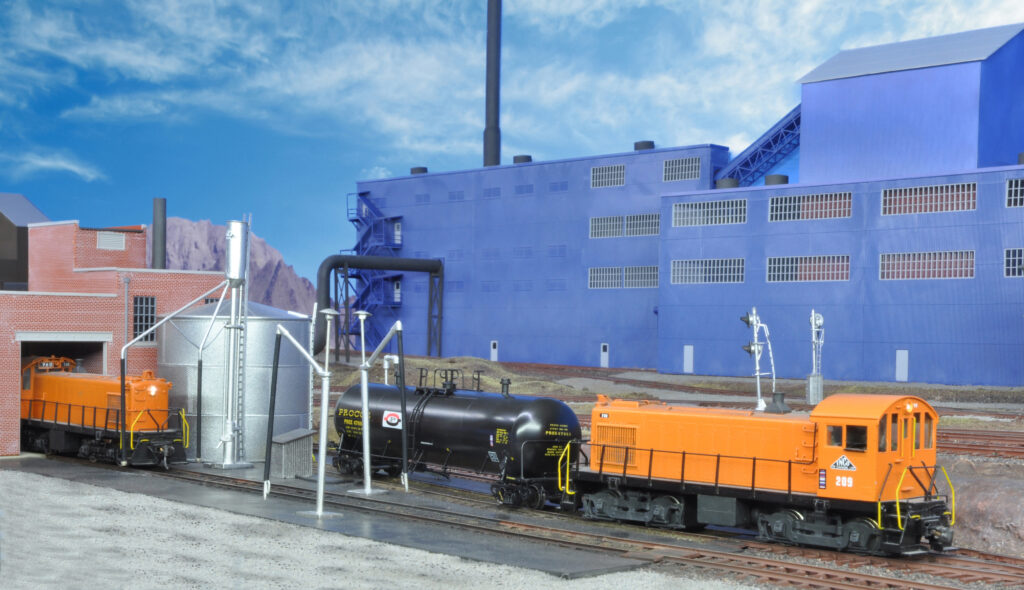
Ontario Central Railway
Hosts: Kathi and Bram Bailey
The Ontario Central Railway (OCR), is a proto-freelanced layout built for operation It is a provincially chartered railway, similar to the Ontario Northland, serving the central portion of Ontario from Toronto to Fort Francis. The portion modeled is the operation on Manitoulin Island, located in the northern part of Lake Huron, known as the Island Division.
On a personal level, Bram’s favorite prototype operations are the Ontario Northland and Canadian National’s Prince Edward Island operation. His favorite power are those built by Montreal Locomotive Works (MLW) based on Alco designs. He has combined these three elements into the OCR.
The era modelled is September 1968. The OCR’s roster is almost all MLW. The main customers on the railway are the International National Nickel Smelter at Turtle Lake and the Abitibi Paper Newsprint mill at Sucker Creek. Other than those industries the island is largely agricultural with wheat, corn, soybeans and potatoes as the main crops. There is also some lumbering in the form of sawmills and planning mills.
The Island Division consists of six subdivisions. The OCR has a car float operation at Providence Bay and a physical connection to the Canadian Pacific at Little Current. Because of the island location there is almost no bridge traffic on this portion of the OCR. Everything coming to and from the island is either originating or terminating on the island. Because of this there is a very high ratio of Ontario Central freight cars to off-line cars.
Operation is as follows:
Trains to/from Sudbury (Canadian Pacific), Englehart/Capreol (Ontario Northland & Canadian National) and Fort Francis (OCR & Northern Pacific) connect through trackage rights over the CPR to Little Current then over the OCR to West Bay. These trains come from upper-level staging. The ferry operation to/from Toronto is accomplished by three car floats at the Providence Bay Docks. Each subdivision is served by a way freight each day. The papermill and the docks are typically served twice a day. Operation is point to point with no provision for continuous running. Passenger service is provided primarily by Budd RDC cars.
Yardmasters are assigned to the main classification yard at West Bay, Providence Bay Docks and Little Current. The Inco Smelter has its own switching railway that is operated by the Inco Yardmaster. Car movements are controlled by car cards. The OCR is powered by a wireless NCE system. All track switches are powered, but not operated from DCC decoders, they are controlled conventionally from panels and/or the facia. The rail size ranges from code 83 down to code 40 and is sized to accommodate the traffic operating over it. Trackage is 100% complete.
The scenery replicates northern Ontario’s Precambrian Shield and is about 50% complete. The layout is purposely designed with a high scenery to track ratio. The Scenery and many of the structures were done by the OCR Scenery Crew that consists of Scott Benson, Jeff Gray, Jeff Lauren, Lee Sheffield, Tim Sheffield, Ron Spiga, Ken Stroebel, Bob Todten, and Adam Woodie.
Some relevant statistics:
Layout size = 52’ x 32’ (70% double decked)
Main line length = 620’
Passing sidings = 9
Staging tracks = 18
Quantity of Track Switches = 282
Number of trees built to date ~10,000
Anticipated number of trees required to complete the layout ~22,000
Approx. Qtys. of Rolling Stock:
Freight Cars ~850, 98% Plastic (95% in operation or staging)
Locomotives ~250, 70% Brass (~50 in operation per session)
Vans (Cabooses) ~50, 66% Brass (~20 in operation per session)
RDC Cars 10, 100% Brass (6 in operation per session)
